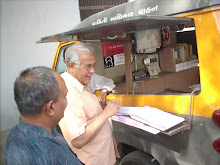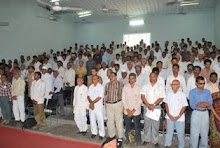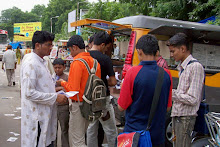Times of
India: Mumbai: Monday, October 07, 2019
 The
RTI information showed that though nearly 600 BMC employees faced serious
corruption and criminal cases in the last 18 years, including charges linked to
negligence in the Kamala Mills fire and sexual assault of minors in BMC
schools, not more than 54 have been dismissed from service. Of the rest, 72 are
on suspension and a few others have retired with their cases still pending, but
the rest who make up nearly 80% continue in service.
The
RTI information showed that though nearly 600 BMC employees faced serious
corruption and criminal cases in the last 18 years, including charges linked to
negligence in the Kamala Mills fire and sexual assault of minors in BMC
schools, not more than 54 have been dismissed from service. Of the rest, 72 are
on suspension and a few others have retired with their cases still pending, but
the rest who make up nearly 80% continue in service.
A
BMC engineer of the building proposal department, who was convicted along with
two other engineers and sentenced to three years rigorous imprisonment last
August for accepting Rs 15 lakh as bribe from a builder, is back in service
after he challenged the order in the Bombay high court. He is not alone several
BMC employees facing serious corruption cases have been reinstated in service pending
the completion of their trials.
Data
obtained by TOI through the Right To Information Act shows that the
anti-corruption bureau (ACB) has nabbed hundreds of BMC employees red-handed
over the last two decades accepting bribes, but in more than half the cases the
agency has failed to prove the charges in court, or stop the accused from
getting a stay on his or her conviction.
 The
RTI information showed that though nearly 600 BMC employees faced serious
corruption and criminal cases in the last 18 years, including charges linked to
negligence in the Kamala Mills fire and sexual assault of minors in BMC
schools, not more than 54 have been dismissed from service. Of the rest, 72 are
on suspension and a few others have retired with their cases still pending, but
the rest who make up nearly 80% continue in service.
The
RTI information showed that though nearly 600 BMC employees faced serious
corruption and criminal cases in the last 18 years, including charges linked to
negligence in the Kamala Mills fire and sexual assault of minors in BMC
schools, not more than 54 have been dismissed from service. Of the rest, 72 are
on suspension and a few others have retired with their cases still pending, but
the rest who make up nearly 80% continue in service.
Former
ACB director general Praveen Dixit said 50% of ACB cases fall apart in the
court because complainants turn hostile during trial. In others, the accused
get acquitted on benefit of doubt or due to delay in the trial.
Corrupt
civic staff continue to serve as complainants don’t follow through
Sunil
Rathod is an executive engineer in BMC’s building proposal wing, based out of
the E-Ward (Byculla) office. There’s nothing unusual about his daily routine he
goes about his work like the thousands of other engineers employed in civic
administration except that he is a man convicted and sentenced to three years’
imprisonment for demanding a bribe of Rs 25 lakh from a builder.
Rathod
has managed to stay put in service despite such a stringent judicial order
because he went in appeal. There are five others against whom dismissal orders
have been issued by the BMC chief; they too remain in service because the order
is merely the first step in a long-drawn-out process, which involves the
issuing of show-cause notices and a scrutiny of their replies. Essentially,
sacking of government staff through judicial or administrative action is a
process riddled with complexities.
Even
if their trial is on, under the rules, they do not face departmental action which
means they are entitled to all benefits as well as increments and promotions.
There are 42 such employees who draw full benefits on their jobs despite facing
ACB cases.
“BMC
cannot keep someone under suspension for more than 12 months, and after that it
has to reinstate them in service,” said a retired deputy municipal
commissioner. There are rules to deal with such cases and they allow civic
staff facing corruption or criminal charges to return to service pending trial,
he added.
Civic
officials said the BMC commissioner has powers to decide on department action including
dismissal and demotion but such action often depends on the outcome of the
BMC’s internal preliminary enquiry (PE) findings, and the PE can take years to
complete. For instance, after the Kamala Mills fire of 2017, the BMC is yet to
award punishment to officials held responsible for negligence that led to the
incident that killed 14 persons.
Former
municipal commissioner Subodh Kumar said, “It’s not good to keep them in the
department...in cases where officials have been convicted, they should be
immediately removed from service.”
Former
ACB director general Praveen Dixit said the chances of corruption in BMC are
higher compared to other departments, considering the high stakes involved. He
suggested a thorough review in order to adopt corrective measures. “The BMC’s
building proposal (BP) department is allegedly the most corrupt, considering
the amount of money involved. But there are very few complainants. At present,
the entire focus is on scrutinizing building proposals that are submitted,
which results in delays, giving rise to corruption. Instead of such a
procedure, let a building’s architect authenticate the proposal and let him be
held accountable for any negligence, followed by penal action,” Dixit added.
During
his tenure, ACB had encouraged citizens to come forward to lodge complaints
against corrupt officials in a free and fair manner, he said.
An
assistant municipal commissioner said most ACB cases occur because of disputes
between corrupt officials and complainants over bribe amounts. He said after
getting officials arrested by ACB, complainants don’t even bother to follow up,
which results in acquittals. Former ACB officials too cited similar reasons for
poor conviction, adding that delays in trials also weaken such cases.














































































